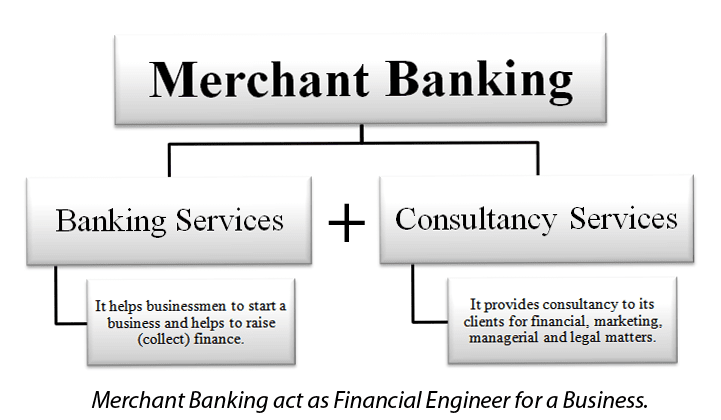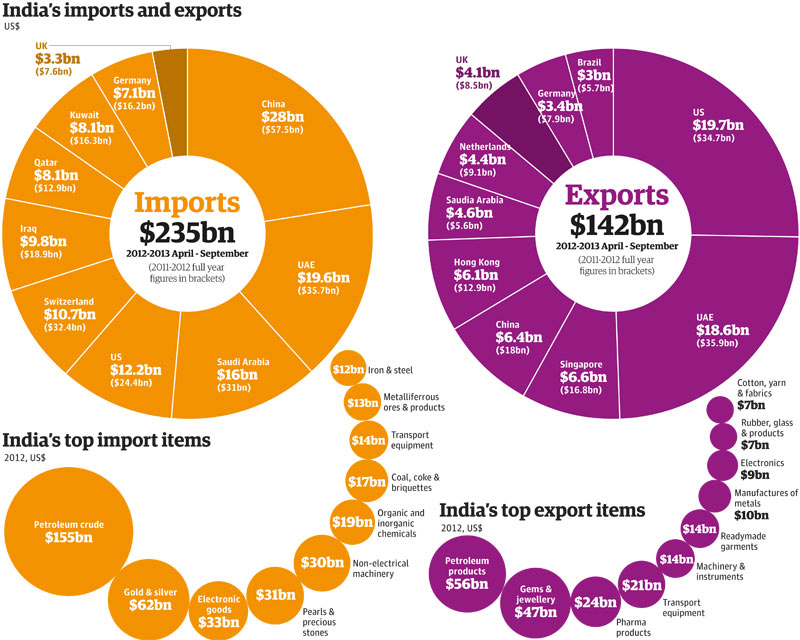International Trade: What are the major exports and imports in India
Strengthening the Global Trade System
Among the various components of the country, extraordinary communities dominated the business. Punjabi and Multani traders treated the change inside the northern region, while the Bhats traded the states of Gujarat and Rajasthan. In western India, these businesses, known as Mahajan, used to be an important trader of Chaat South. In city centres like Ahmedabad, mahajan neighborhoods are jointly represented using their flagship, known as Nagarseth. Other city agencies protected expert instructions such as Hakim and Vaid (physician), Vaikil (lawyer), Pandit or Mulla (teacher), painter, musician, calligrapher, etc.
Types of Merchant Banking
The service provider additionally gained power and status from criminals, who had enough firms of their own to protect the activities of traders. These corporations, held on a formal basis, blamed their individual policies of membership and expert code of conduct, which accused kings of accepting and honoring them. Business and enterprise taxes were additionally a serious supply of revenue. Traders had to pay octro responsibilities imposed on most of the articles imported at a kind of rates. They have been paid in money or in a similar manner.

Customs is diverse in line with commodities. Different types from province to province. Ferry tax used to be some other supply of the generation of profits. It had to procure passengers, goods, cattle and trains. The right to acquire labour tax was once generally transferred to neighborhood bodies.
Without delay, the guild chief entered into an agreement with the king or tax collectors and settled the market in difficult and quick amounts of money on behalf of his fellow traders. Guild retailers additionally served as guardians of religious interests. He worked for the construction of temples and donated corporation tax to his members. Thus, the undertaking enabled traders on a large scale to instill strength within the society.
India International Trade Center
All kinds of cities are port city, manufacturing city, enterprise city, sacred amenities and pilgrim city. Their existence is an index of the prosperity of service provider communities and expert classes. Historically important buying and selling centers in India were:
1. Pataliputra: Today is known as Patna. It no longer used to be just a billboard city, although a serious hub for the export of stones.
2. Peshawar: It was never an essential export middle for wool and for imported horses. Within the first century, it had a large stake in industrial transactions between India, China and Rome.
3. Takshashila: It serves as a serious hub on the required land route between India and Central Asia. It has additionally been a city of economic and business banks. The city occupied an essential area as the training corps of Buddhism. The famous Takshashila University was developed here.
4. Indraprastha: It used to be an industrial junction on the avenue, from where most of the routes were converted to east, west, south and north.
5. Mathura: It was once an emporium of commercial enterprise and that's where others subscribed to commerce. Many routes in South India touched Mathura and brooch.
6. Varanasi: It was once properly located as it deployed each on the Ganga Marg and a toll road belonging from north to east. It developed into a serious center of the fabric enterprise and was famous for the workmanship of beautiful gold silk fabrics and sandalwood. It used to be associated with Takshashila and Bharuch.
7. Mithila: Mithila retailers crossed the sea through boats from the Bay of Bengal to the South China Sea and traded at ports on the islands of Java, Sumatra and Borneo. Mithila established enterprise colonies in south China, especially in Yunnan.
8. Ujjain: Ajet, Karlinian, Maslin and Malo fabrics are exported from Ujjain to several centres. In addition, family members exchanged along the land route of Takshashila and Peshawar.
9. Surat: It used to be an image of western change at any time of the Mughal period. Surat's clothes are famous for their gold boundaries (zari). It can also be mentioned that Surat Handi was honoured in the distant markets of Egypt and Iran.
10. Kanchi: Today identified as Kanchipuram, it used to be here that regular foreign ships of Chinese language are available to retrieve pearls, glass and unusual stones and together they offered gold and silk.
11. Madura: It used to be the capital of pandas that used to manage the pearl fishes of the Gulf of Mannar. This attracted foreign traders, mainly the Romans, to lift foreign trade.
12. Brooch: It was a quality seat of commerce in western India. It was once placed on the banks of the river Narmada and was linked to all important deaths with the help of roadways.
13. Cauvery: Also known as Kaveripatnam, it used to be a scientist in its building as a metropolis and supplied loading, unloading and effective facilities of goods. Never had a headquarters of all foreign traders through this city. It was a time for alternative location with Malaysia, Indonesia, China and alternatively the Far East. It used to be in the midst of the exchange of perfumes, cosmetics, scents, silk, wool, cotton, corals, pearls, gold and valuable stones; And also for shipbuilding.
14. Copper: It was once one of the great ports related to each sea and land with the west and as a result of the Far East. It was ever related through revenue for Banaras and Takshashila.
Major products exported and imported from India
Be spices, wheat, sugar, indigo, opium, vegetable oil, cotton, parrot, cattle and cattle trader in export - skins, skins, horns, tortoise shells, pearls, sapphires, quartz, crystals, lapis, lazuli, granite, turquoise and more. Copper, etc.
Imports include horses, animal products, Chinese silk, flax and linen, wine, gold, silver, tin, copper, lead, ruby, coral, glass, amber, etc.

Imports include horses, animal products, Chinese silk, flax and linen, wine, gold, silver, tin, copper, lead, ruby, coral, glass, amber, etc.
International Trade: Major Exports and Imports of India
India is one of the world's largest economies, with a diverse trade portfolio. The country exports a variety of goods and services, while also importing essential commodities to meet domestic demand.
Major Exports of India
India's exports primarily include petroleum products, gems and jewelry, pharmaceuticals, textiles, and agricultural products.
1. Petroleum Products
- Diesel, petrol, and other refined petroleum products
- Export Destinations: UAE, USA, Netherlands, Singapore
- Contribution: ~15% of total exports
2. Gems and Jewelry
- Diamonds, gold jewelry, and silver ornaments
- Export Destinations: USA, UAE, Hong Kong
- Contribution: ~8-10% of total exports
3. Pharmaceuticals
- Generic medicines, vaccines, and active pharmaceutical ingredients (APIs)
- Export Destinations: USA, UK, South Africa, Russia
- Contribution: ~6% of total exports
4. Textiles and Apparel
- Cotton, silk, and synthetic fibers, along with ready-made garments
- Export Destinations: USA, UAE, UK, Germany
- Contribution: ~5-6% of total exports
5. Agricultural and Food Products
- Rice (Basmati and non-Basmati), wheat, tea, coffee, spices, and sugar
- Export Destinations: Middle East, USA, Bangladesh, Vietnam
- Contribution: ~7-8% of total exports
6. Engineering Goods
- Automobiles, industrial machinery, electrical equipment, and steel products
- Export Destinations: USA, Germany, UAE, China
- Contribution: ~25% of total exports (largest share)
7. IT and Software Services
- Software development, IT consulting, and BPO services
- Export Destinations: USA, Europe, Australia
- Contribution: ~55% of India’s total service exports
Major Imports of India
India imports raw materials, energy resources, and high-tech products to support its industrial and economic growth.
1. Crude Oil and Petroleum
- India is one of the largest importers of crude oil.
- Import Sources: Iraq, Saudi Arabia, UAE, Russia
- Contribution: ~25-30% of total imports
2. Gold and Precious Stones
- Used in jewelry, investments, and industrial applications
- Import Sources: Switzerland, UAE, South Africa
- Contribution: ~6-8% of total imports
3. Electronic Goods
- Mobile phones, semiconductors, computer hardware, and telecommunication equipment
- Import Sources: China, South Korea, USA
- Contribution: ~12-15% of total imports
4. Machinery and Industrial Equipment
- Electrical machinery, mechanical equipment, and factory tools
- Import Sources: China, Germany, Japan
- Contribution: ~10% of total imports
5. Chemicals and Fertilizers
- Organic and inorganic chemicals, fertilizers (urea, DAP), and plastics
- Import Sources: China, Saudi Arabia, USA
- Contribution: ~5-6% of total imports
6. Coal, LNG, and Natural Gas
- Essential for power generation and steel production
- Import Sources: Indonesia, Australia, USA, Qatar
- Contribution: ~4-5% of total imports
Trade Balance and Challenges
- India often has a trade deficit (imports > exports) due to high oil and gold imports.
- The government promotes "Make in India" and export incentives to boost manufacturing and reduce reliance on imports.
- Free Trade Agreements (FTAs) with multiple countries aim to improve trade flows.
Would you like insights on India’s trade policies or trends in global trade?


